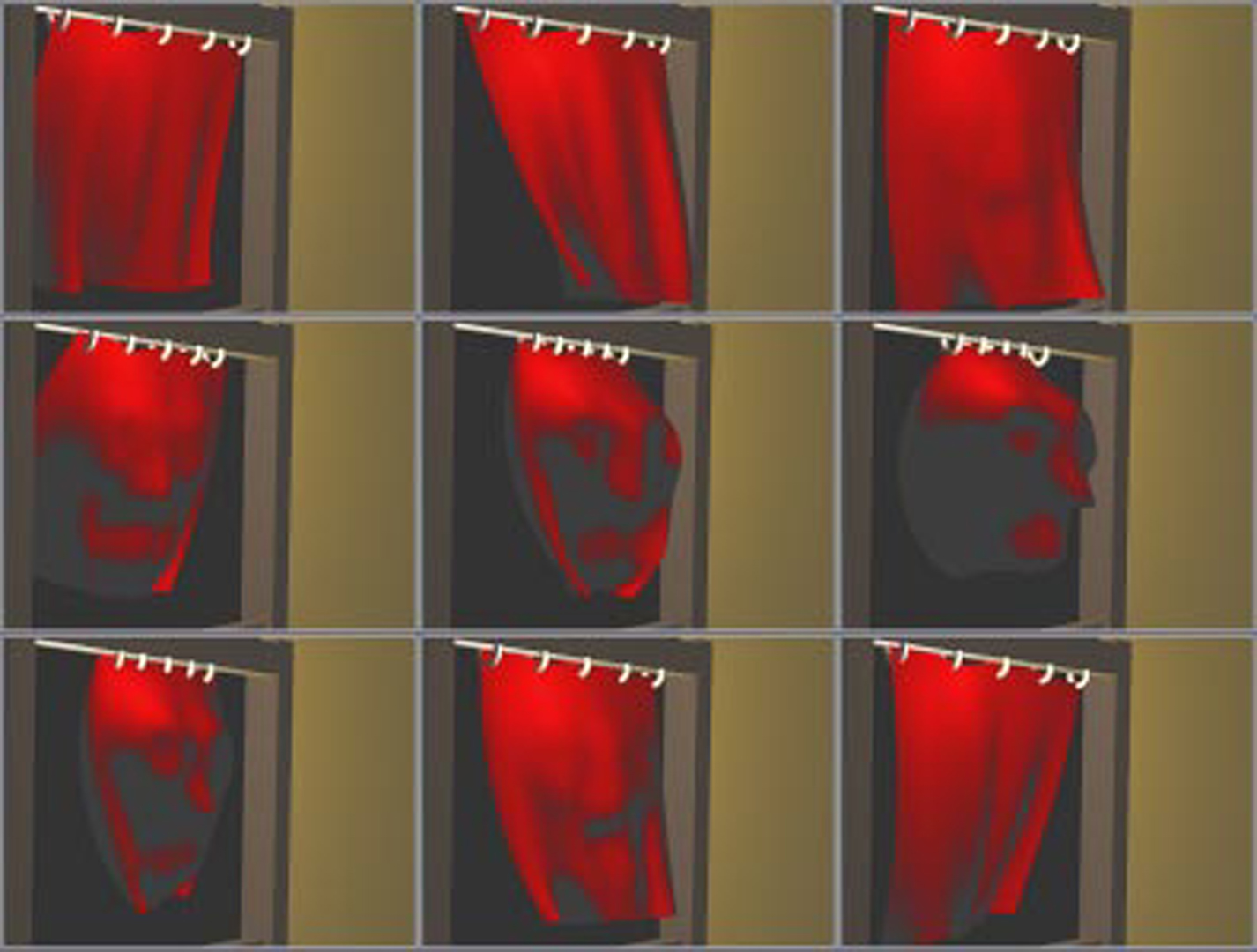“Wires: a geometric deformation technique” by Singh and Fiume
Conference:
Type(s):
Title:
- Wires: a geometric deformation technique
Presenter(s)/Author(s):
Abstract:
Finding effective interactive deformation techniques for complex geometric objects continues to be a challenging problem in modeling and animation. We present an approach that is inspired by armatures used by sculptors, in which wire curves give definition to an object and shape its deformable features. We also introduce domain curves that define the domain of deformation about an object. A wire together with a collection of domain curves provide a new basis for an implicit modeling primitive. Wires directly reflect object geometry, and as such they provide a coarse geometric representation of an object that can be created through sketching. Furthermore, the aggregate deformation from several wires is easy to define. We show that a single wire is an appealing direct manipulation deformation technique; we demonstrate that the combination of wires and domain curves provide a new way to outline the shape of an implicit volume in space; and we describe techniques for the aggregation of deformations resulting from multiple wires, domain curves and their interaction with each other and other deformation techniques. The power of our approach is illustrated using applications of animating figures with flexible articulations, modeling wrinkled surfaces and stitching geometry together.
References:
1. A. Barr. Superquadrics and angle-preserving transformations. IEEE Computer Graphics and Applications, 1:1-20, 1981.
2. T. Beier and S. Neely. Feature based image metamorphosis. Computer Graphics, 26(2):35-42, 1992.
3. J. Bloomenthal and B. Wyvill. Interactive techniques for implicit modeling. Computer Graphics, 24(4):109-116, 1990.
4. J. Bloomenthal and K. Shoemake. Convolution surfaces. Computer Graphics, 25(4):251-256, 1991.
5. J. Chadwick, D. Haumann and R. Parent. Layered construction for deformable animated characters. Computer Graphics, 23(3):234-243, 1989.
6. Y.K. Chang and A.E Rockwood. A generalized de Casteljau approach to 3D free-form deformation. Computer Graphics, 28(4):257-260, 1994.
7. S. Coquillart. Extended free-form deformations: A sculpting tool for 3D geometric modeling. Computer Graphics, 24(4):187-196, 1990.
8. M.-E Gascuel. An implicit formulation for precise contact modeling between flexible solids. Proc. of SIGGRAPH, pages 313-320, 1993.
9. W. Hsu, J. Hughes and H. Kaufman. Direct manipulation of free-form deformations. Computer Graphics, 26(2): 177-184, 1992.
10. R. MacCracken and K. Joy. Free-form deformations with lattices of arbitrary topology. Computer Graphics, 181-189, 1996.
11. N. Magnenat-Thalmann and Y. Yang. Techniques for cloth animation. SIGGRAPH Course Notes C20, 151-163, 1991.
12. F. Lazarus, S. Coquillart, and E Jancene. Axial deformations: an intuitive deformation technique. Computer-Aided Design, 26(8):607-613, August 1994.
13. T. Sederberg and S. Parry. Free-form deformation of solid geometric models. Computer Graphics, 20:151-160, 1986.
14. E Schneider. Solving the Nearest-Point-on-Curve Problem. Graphics Gems, Academic Press, vo1.1:607-612, 1990.
15. G. Wyvill, C. McPheeters and B. Wyvill. Animating soft objects. Visual Computer, 2:235-242, 1986.




